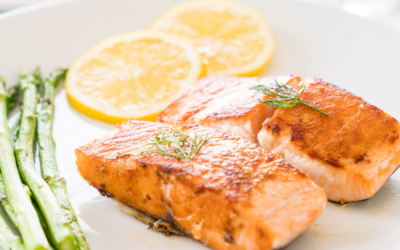Summary of key points
Thyme and oregano are two popular herbs that add depth and flavor to various dishes. While both herbs belong to the mint family and share some similarities, they also have distinct characteristics that set them apart. Thyme is known for its earthy and slightly minty flavor, while oregano offers a more robust and pungent taste.
Herbs enhance our favorite dishes, and popular choices include thyme and oregano. These versatile herbs are known for their distinct flavors and aromas, but understanding their differences can help us choose when cooking.
In this article, we will explore the characteristics of thyme and oregano. We will delve into their unique qualities and determine which herb is more suitable for culinary endeavors. So, let’s dive into the world of thyme and oregano and discover their contrasting attributes.
What is thyme?
Thyme is a perennial herb with small, aromatic leaves from the mint family. It is native to the Mediterranean region and has been used for centuries in cooking and traditional medicine. Here are some characteristics of thyme:
- Description of thyme herb: Thyme plants typically have woody stems and small, oval-shaped leaves ranging from green to gray-green. The leaves are highly fragrant and release a delightful aroma when crushed or bruised.
- Flavor and aroma profile: Thyme has a warm, earthy flavor with subtle hints of mint, lemon, and a floral undertone. Its aroma is robust and herbal, making it a popular choice for savory dishes.
- Popular culinary uses: Thyme is widely used in Mediterranean, French, and Italian cuisines. It pairs well with various ingredients, including meats, vegetables, soups, stews, and marinades. For example, it adds depth and complexity to roasted chicken, grilled vegetables, and tomato-based sauces.
- Nutritional value: Thyme is a flavorful herb and a source of essential nutrients. It contains vitamins C and K and minerals like iron, calcium, and manganese. Thyme also contains antioxidants and compounds with potential health benefits.
Thyme’s unique flavor and versatility make it a go-to herb for culinary creations. Its ability to enhance dishes’ taste while adding a pleasant aroma makes it a popular choice in kitchens worldwide.
What is oregano?
Oregano is a perennial herb belonging to the mint family. It is native to the Mediterranean region and well-known for its intense flavor and aromatic qualities. But first, let’s explore oregano’s characteristics:
- Description of oregano herb: Oregano plants have small, oval-shaped dark green leaves. The leaves grow in opposite pairs on the stem and are often hairy. Oregano plants vary in size, from compact bushes to trailing vines.
- Flavor and aroma profile: Oregano has a robust and spicy flavor with a bitter and peppery taste. Its aroma is highly aromatic, reminiscent of mint and earthy notes. Oregano’s flavor and smell become more pronounced when dried.
- Popular culinary uses: Oregano is a staple herb in the Mediterranean and Italian cuisines. It is commonly used in pizzas, pasta sauces, grilled meats, and tomato-based dishes. Oregano pairs well with ingredients like tomatoes, olives, cheese, and garlic, adding a distinct Mediterranean flair to recipes.
- Nutritional value: Oregano is valued for its flavor and nutritional benefits. It is an excellent source of vitamins A, C, and K and minerals like iron, calcium, and manganese. In addition, oregano also contains antioxidants and compounds with antimicrobial and anti-inflammatory properties.
Oregano’s bold flavor and aroma make it a popular choice for adding depth to various dishes. In addition, its versatility and compatibility with Mediterranean and Italian cuisines have earned it a special place in the culinary world.
What are the differences between thyme and oregano?
Thyme and oregano may be aromatic herbs, but their distinct characteristics set them apart. Here are the critical differences between thyme and oregano:
Appearance and growth habits
- Thyme: Thyme plants have woody stems and small, oval-shaped leaves. They tend to grow compact and bushy.
- Oregano: Oregano plants have hairy, dark green leaves that grow in opposite pairs on the stem. They can vary in size and may increase as trailing vines or large bushes.
Flavor profiles and culinary uses
- Thyme: Thyme has a warm, earthy flavor with hints of mint and lemon. It is commonly used in Mediterranean, French, and Italian cuisines to enhance meat, vegetable, soup, and stew flavors.
- Oregano: Oregano has a robust, spicy flavor with a bitter and peppery taste. It is a staple herb in the Mediterranean and Italian cuisines, often used in pizzas, pasta sauces, and grilled meats.
Nutritional composition
- Thyme: Thyme contains vitamins C and K, as well as minerals like iron, calcium, and manganese. It also contains antioxidants and compounds that may benefit health.
- Oregano: Oregano is an excellent source of vitamins A, C, and K, as well as minerals like iron, calcium, and manganese. It also contains antioxidants and compounds with antimicrobial and anti-inflammatory properties.
Medicinal properties and health benefits
- Thyme: Thyme is traditionally used in herbal medicine for its antibacterial, antifungal, and antispasmodic properties. It may also support respiratory health and digestion.
- Oregano: Oregano has antimicrobial properties and may combat infections. It is also believed to have antioxidant and anti-inflammatory effects.
Considering these differences, the choice between thyme and oregano depends on personal preferences and culinary applications. Thyme’s warm, herbal flavor complements a variety of dishes, while oregano’s bold and spicy taste is particularly well-suited to Mediterranean and Italian recipes.
Choosing between thyme and oregano
When selecting between thyme and oregano, there are several factors to consider. Here are some considerations to help you make the right choice:
Personal taste preferences
- Thyme: If you enjoy a warm, earthy flavor with hints of mint and lemon, thyme may be your preferred choice.
- Oregano: If you prefer a robust, spicy flavor with a bitter and peppery taste, oregano may appeal to your palate.
Compatibility with specific dishes or cuisines
- Thyme: Thyme’s versatile flavor suits various dishes, primarily Mediterranean, French, and Italian cuisines.
- Oregano: Oregano’s robust flavor perfectly matches Mediterranean and Italian dishes like pizzas, pasta sauces, and grilled meats.
Availability and cultivation ease
- Thyme: Thyme is a commonly available herb that is easy to grow in herb gardens or pots.
- Oregano: Oregano is also readily available, and its hardy nature makes it a resilient herb that thrives in various growing conditions.
Potential health benefits
- Thyme: Thyme is associated with potential antibacterial, antifungal, and respiratory health benefits.
- Oregano: Oregano has antimicrobial properties and may offer antioxidant and anti-inflammatory effects.
Ultimately, the choice between thyme and oregano depends on your taste preferences, the specific dishes you plan to prepare, the availability and ease of cultivation, and the potential health benefits you seek.
Experiment with both herbs to discover the flavors and aromas that best suit your culinary creations. Feel free to use them in combination to enhance your dishes’ complexity. So, enjoy the delightful world of thyme and oregano in your cooking endeavors!
Takeaway
Thyme and oregano are different herbs that bring distinct flavors and aromas. Thyme offers a warm, earthy taste with hints of mint and lemon. Oregano delivers a robust, spicy flavor with a bitter and peppery profile. Understanding their differences allows us to make informed decisions when choosing between them.
Thyme shines in Mediterranean, French, and Italian cuisines, enhancing meats, vegetables, soups, and stews. It’s versatility and nutritional value make it a popular choice in the kitchen.
On the other hand, oregano is a staple herb in Mediterranean and Italian cooking, adding depth and character to pizzas, pasta sauces, and grilled meats. In addition, its intense flavor and potential health benefits make it a valuable ingredient in many recipes.
When choosing, consider your personal taste preferences, the specific dishes you’re preparing, the availability and ease of cultivation, and the potential health benefits you seek. Experiment with thyme and oregano to explore their unique qualities and create delightful culinary combinations.
Ultimately, the decision between thyme and oregano depends on your preferences and flavors. So, embrace the versatility of these herbs and enjoy the wonderful world of thyme and oregano in your cooking adventures!















